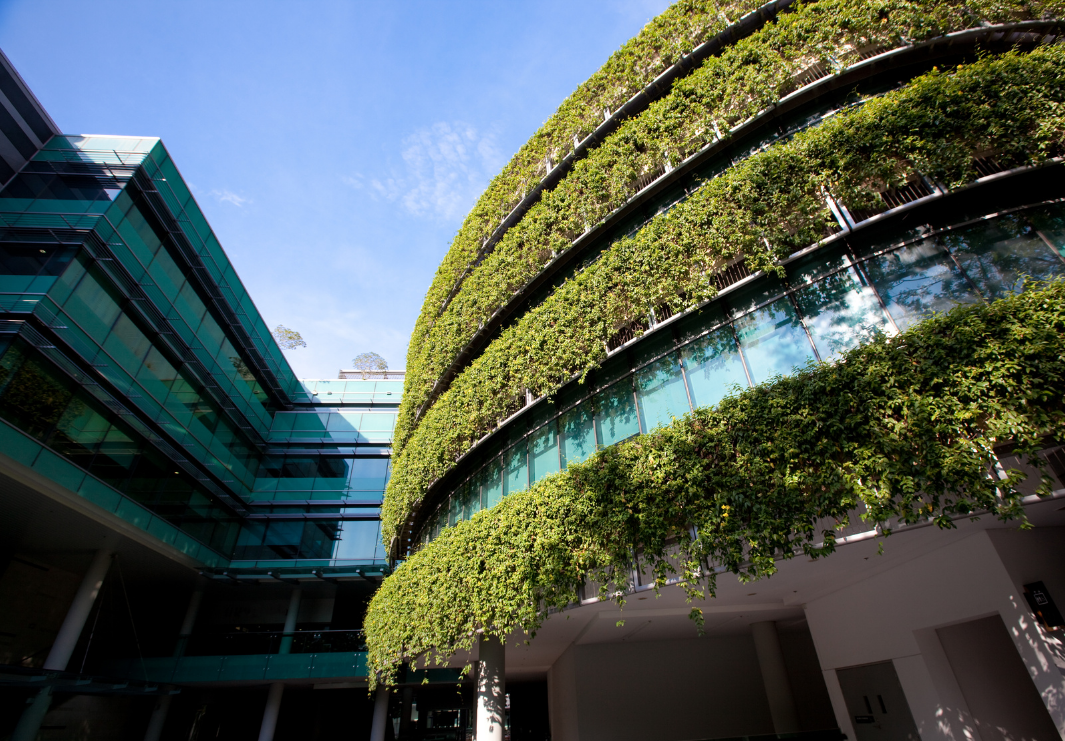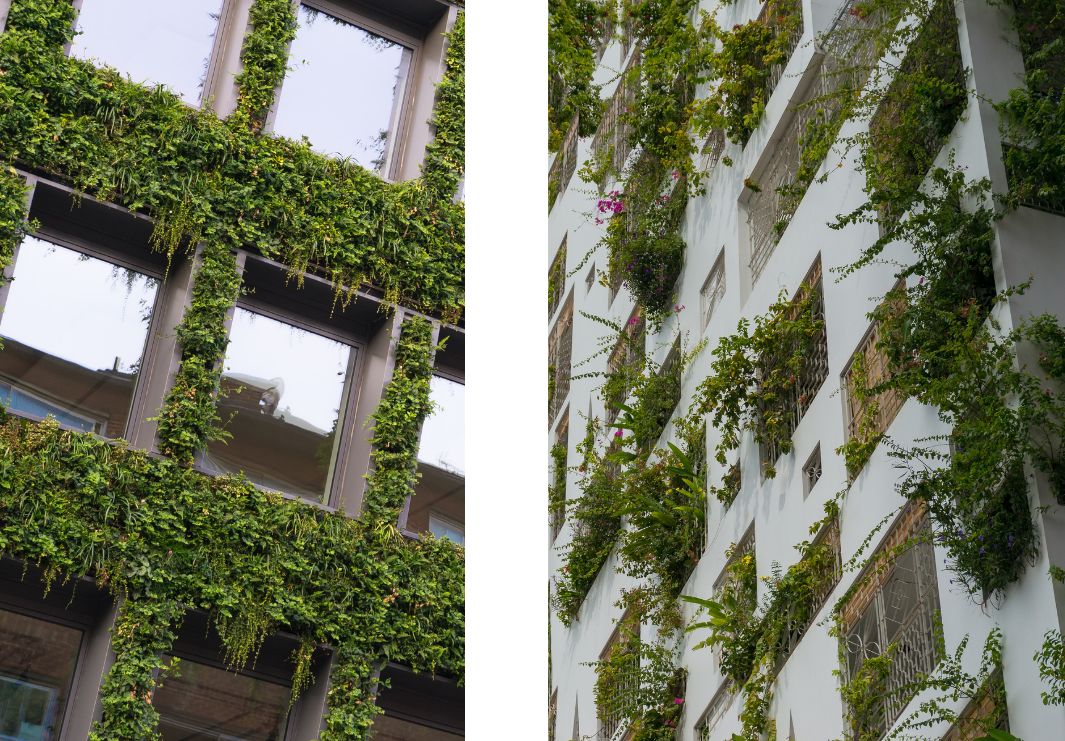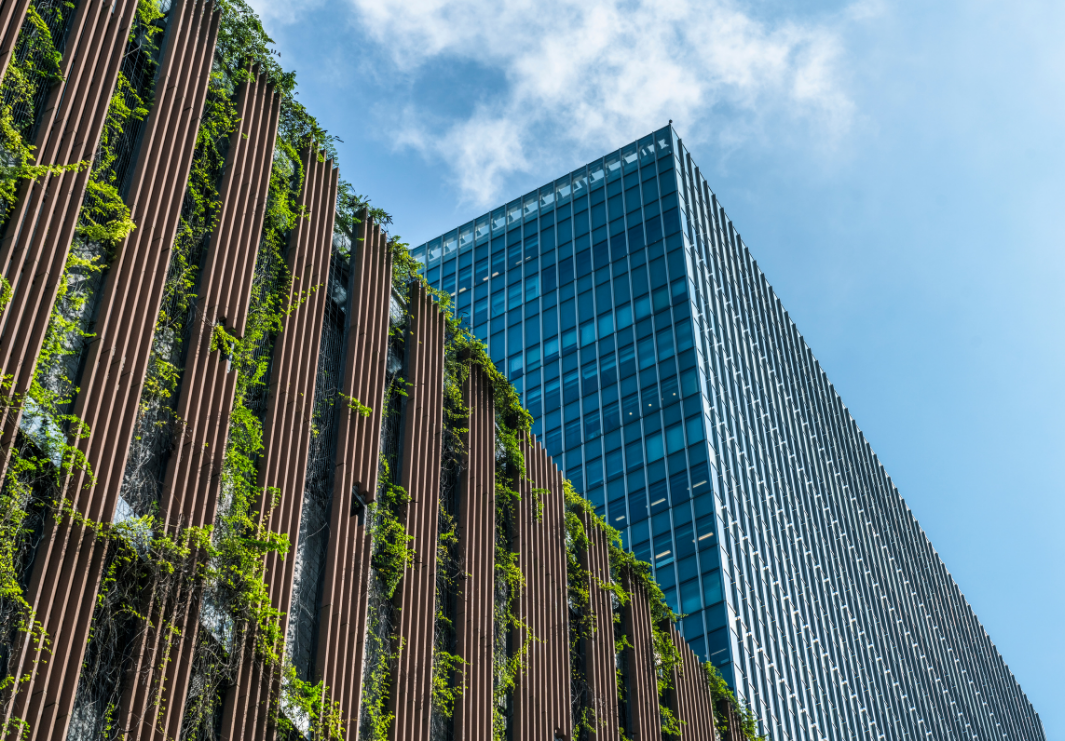Green Building concepts can be applied at all levels, from a single building to neighbourhoods or entire cities. A building is considered green if it is designed, constructed and operated using an approach that:
Green building technology is a forward-thinking approach that focuses on designing, constructing, and operating buildings to minimize environmental impact, enhance energy efficiency, and promote occupant well-being. It’s not just a trend—it's a necessity in today’s climate-conscious world.
At Rubenius, we integrate eco-friendly interiors and sustainable architecture into every project, ensuring that our designs are not only aesthetically pleasing but also environmentally responsible. Whether it’s a single structure or an entire green experience center, the goal remains the same: build smart, live sustainably.

Global concerns over rising carbon emissions, depleting natural resources, and climate change have intensified the demand for eco-conscious construction. Buildings account for a significant percentage of greenhouse gas emissions. Green buildings help reduce this footprint by:
Rubenius believes that every space—from commercial buildings to innovation labs—should incorporate sustainable practices at the core of its design.
The advantages of Green Building Technology should be taken into consideration while constructing your eco-friendly house design.
Green building technology plays an important role in lowering carbon footprint. The greenhouse gases emitted from 1 tonne of concrete are approximately 1.5 times that of steel and equal to that of the aluminium which is extracted from bauxite ore. Hence, reducing the overall weight of concrete used during the construction process is very important. This can be achieved by using fly ash in the concrete mix. Fly ash is a waste product obtained during coal combustion and has various uses as per requirement. For example, the addition of fly ash in concrete mix improves its compressive strength and makes it fire resistant, thus saving on energy costs associated with air-conditioning in buildings and also avoiding a lot of carbon dioxide emissions into atmosphere due to burning coal to generate electricity.
Green building measures also help optimise energy efficiency by reducing the amount of energy required for heating, lighting or cooling the building or home. It is estimated that a 15% – 30% reduction in total energy consumption can be achieved through simple measures such as insulation of walls, windows and roofs, use of natural light and covering roofs with solar panels for generating solar power. With green building technology, one can save
Green building technology is a relatively new concept that has been used by many companies in recent years. A green building is one that uses less energy, water, and other materials necessary for maintaining its structure while also reducing its carbon footprint. Implementing greener building technologies can help you save money and look after our environment at the same time.
But with so many different green building technologies available, choosing the right approach for your company can be difficult. There are different types of technologies available depending on what you want to achieve and how much you want to spend.
The first step when considering implementing green building technology is to decide if it will benefit you and your business. You may have to invest in eco-friendly commercial buildings if you want to attract eco-conscious employees or customers, or if you have an environmentally-friendly mandate from your government or the public. In these situations, it's important to make sure that the green technology in building construction is actually effective before investing in it since there could be legal consequences if something goes wrong.
If you don't have any specific requirements for a green building, there are still lots of good reasons to go for green technology in building construction. However, this can be a challenge because most of the benefits are indirect savings rather than direct savings that show up immediately.

It has caught the attention of the construction industry and is quickly becoming a standard in the industry. Green building technology has been a recent buzzword, especially within the construction industry. It has actually been around for quite some time but has not been formally recognized until recently. Green technology in building constructions is still new compared to traditional buildings, but recent studies have shown that over time, green buildings are becoming more cost-effective than traditional ones.
Green buildings use various technologies and materials in order to reduce their environmental impact and/or energy costs. Some of these technologies and materials include natural lighting through skylights or windows, solar cells on the roof of the structure, rainwater harvesting systems to reduce water usage, reduced waste by using recycled products and materials, etc… Each of these elements is revolutionary in its own right and has the ability to improve how we build our homes.
The green building concept was first introduced in the U.S. in 1976 by William A. Reilly as "the design, construction and operation of a building employing methods and technologies which will protect and enhance the environment for the life of the building". After being introduced to a worldwide audience by Rachel Carson's book Silent Spring in 1962, people started thinking about how they could create a healthier atmosphere for themselves and for their children. This gave rise to green technology in building construction that emphasizes sustainable interior complemented with the promise of well-being.
Many countries and states have passed laws mandating that builders incorporate green building technology into each new project. For instance, the state of California requires that all new public buildings be certified as LEED-certified. The green building concept is to build in a way that has less impact on the environment. Therefore, green building technologies are designed to reduce resource use, greenhouse gas emissions, and pollution.
There are many different types of green building technologies for home and business construction. Some of these include:
1) Integrated Pest Management (IPM) – IPM is a strategy for managing pests that involve minimizing dependence on chemicals by using integrated tactics, including mechanical, physical and biological control methods.
2) Solar Energy – Using solar energy can reduce carbon dioxide production while producing clean energy. It can also reduce energy consumption since only sunlight is used as an energy source. The use of solar energy in homes can lower utility bills. Another benefit is that there's no need to purchase gasoline or buy batteries for solar power systems since they run on sunlight.
3) Green Building Materials – There are three main types of green building materials: recycled material, non-toxic material and low-embodied energy material.

The pivotal intention of Green Building Technology is to use resources efficiently, improve occupant health and comfort, reduce the overall impact on the environment, and reduce the cost of ownership over the lifespan of a building.
The green building concept is a philosophy that focuses on the efficient use of natural resources and improving occupant health and comfort as well as reducing the overall impact on the environment. Green building and design take into account the impact of building materials, construction processes, operations and maintenance, and even business practices that affect the environment.
Green building is also known as sustainable construction or sustainable architecture. In most countries, green building is synonymous with compliance with a set of standards known as Leadership in Energy and Environmental Design (LEED). LEED certification provides third-party verification of sustainable construction practices, including consideration of energy savings, water efficiency and reduction in waste.

LEED certification standards fall into five categories: sustainable sites, water efficiency, energy and atmosphere, materials and resources, and indoor environmental quality. The standards are revised every three years.
LEED certification can be very useful for new projects since it gives clients an advantage when competing for new contracts. Also, LEED-certified buildings command higher occupancy rates among tenants.
LEED certification does not guarantee financial savings but it does help show potential buyers that you are serious about sustainability. Before investing in a green building project you must check whether your target market/customers are willing to pay a premium for such a facility.

The construction industry is another producer of major greenhouse gas emissions and this fact has raised the concern of environmentalists, option tree huggers, and governments to seek emission reduction measures. The economic interest, however, remains a strong counterforce in obstructing the way to an environmentally friendly construction sector. Many technically and economically feasible concepts for green buildings are found but the main obstacle is that their realization comes at a cost premium. Still, green building technology offers an opportunity for improving the effectiveness of existing models and their potential in reducing adverse environmental impact is enormous. Green building technologies help transform structures into green buildings that are eco-friendly and sustainable. These innovative technologies are in compliance with LEED certification requirements. They involve an integrated approach to constructing, maintaining and operating sustainable buildings that aim to minimize impacts on the environment. In short, green building technology is a revolutionary method of creating livable, energy-efficient buildings for human settlement.